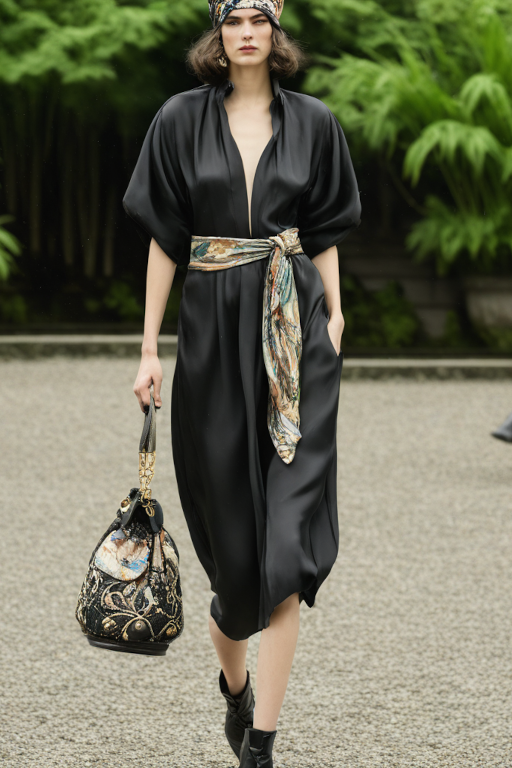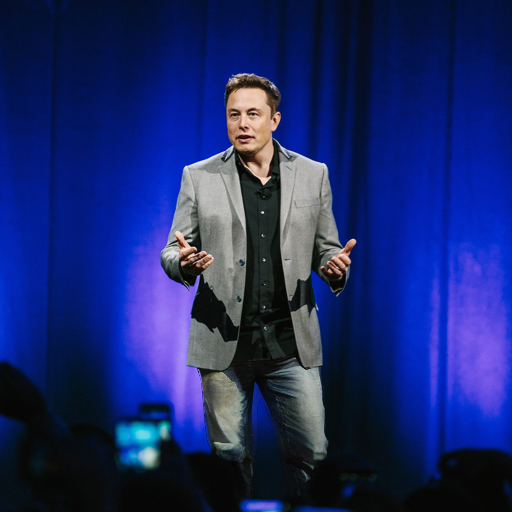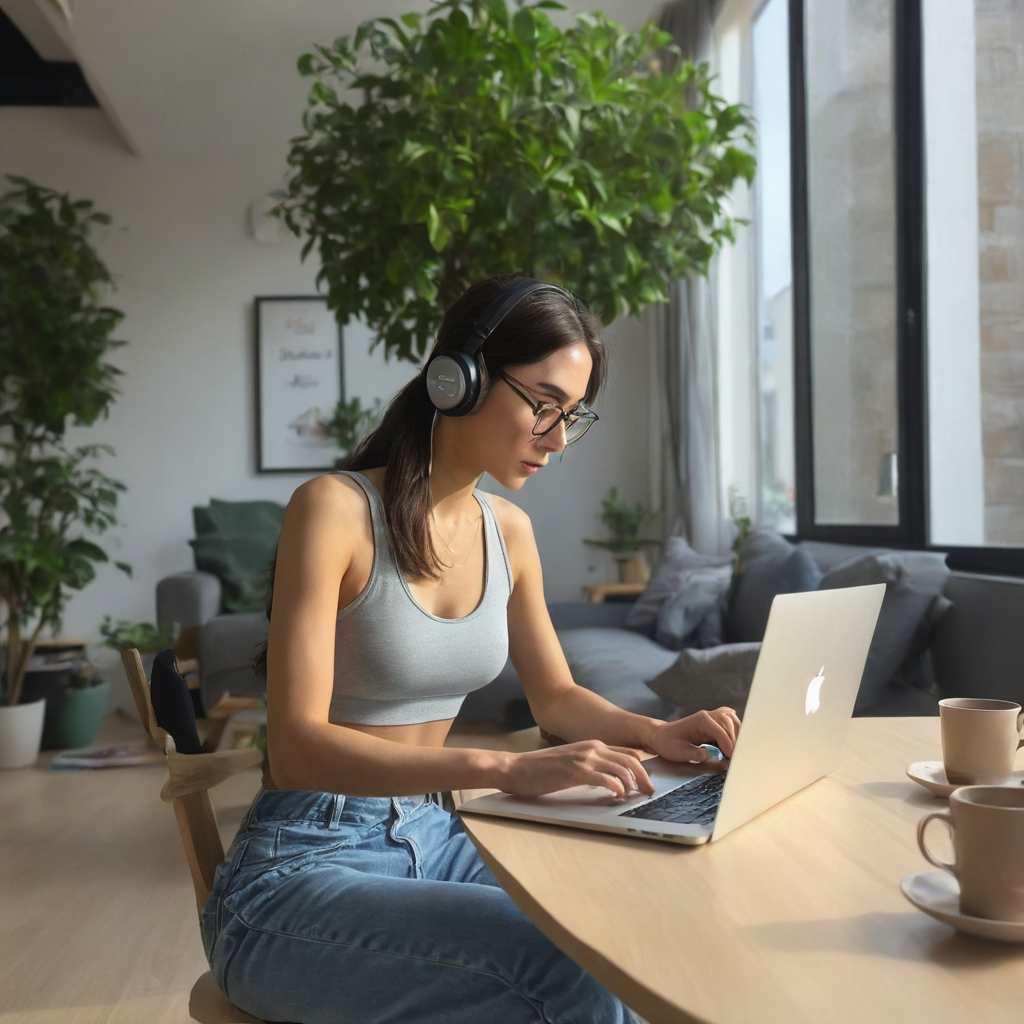fashion-design
Maintainer: omniedgeio

5

| Property | Value |
|---|---|
| Run this model | Run on Replicate |
| API spec | View on Replicate |
| Github link | No Github link provided |
| Paper link | No paper link provided |
Create account to get full access
Model overview
The fashion-design model by DeepFashion is a powerful AI tool designed to assist with fashion design and creation. This model can be compared to similar models like fashion-ai and lookbook, which also focus on clothing and fashion-related tasks. The fashion-design model stands out with its ability to generate and manipulate fashion designs, making it a valuable resource for designers, artists, and anyone interested in the fashion industry.
Model inputs and outputs
The fashion-design model accepts a variety of inputs, including an image, a prompt, and various parameters to control the output. The output is an array of generated images, which can be used as inspiration or as the basis for further refinement and development.
Inputs
- Image: An input image for the img2img or inpaint mode.
- Prompt: A text prompt describing the desired fashion design.
- Mask: An input mask for the inpaint mode, where black areas will be preserved and white areas will be inpainted.
- Seed: A random seed to control the output.
- Width and Height: The dimensions of the output image.
- Refine: The refine style to use.
- Scheduler: The scheduler to use for the diffusion process.
- LoRA Scale: The additive scale for LoRA (Low-Rank Adaptation), which is only applicable on trained models.
- Num Outputs: The number of images to generate.
- Refine Steps: The number of steps to refine the image, used for the base_image_refiner.
- Guidance Scale: The scale for classifier-free guidance.
- Apply Watermark: A toggle to apply a watermark to the generated images.
- High Noise Frac: The fraction of noise to use for the expert_ensemble_refiner.
- Negative Prompt: An optional negative prompt to guide the image generation.
- Prompt Strength: The strength of the prompt when using img2img or inpaint modes.
- Replicate Weights: The LoRA weights to use, which can be left blank to use the default weights.
- Num Inference Steps: The number of denoising steps to perform during the diffusion process.
Outputs
- Array of Image URIs: The model outputs an array of generated image URIs, which can be used for further processing or display.
Capabilities
The fashion-design model can be used to generate and manipulate fashion designs, including clothing, accessories, and other fashion-related elements. It can be particularly useful for designers, artists, and anyone working in the fashion industry who needs to quickly generate new ideas or explore different design concepts.
What can I use it for?
The fashion-design model can be used for a variety of purposes, including:
- Generating new fashion designs and concepts
- Exploring different styles and aesthetics
- Customizing and personalizing clothing and accessories
- Creating mood boards and inspiration for fashion collections
- Collaborating with fashion designers and brands
- Visualizing and testing new product ideas
Things to try
One interesting thing to try with the fashion-design model is exploring the different refine styles and scheduler options. By adjusting these parameters, you can generate a wide range of fashion designs, from realistic to abstract and experimental. You can also experiment with different prompts and negative prompts to see how they affect the output.
Another idea is to use the fashion-design model in conjunction with other AI-powered tools, such as the fashion-ai or lookbook models, to create a more comprehensive fashion design workflow. By combining the strengths of multiple models, you can unlock even more creative possibilities and streamline your design process.
This summary was produced with help from an AI and may contain inaccuracies - check out the links to read the original source documents!
Related Models
deepfashionsdxl

1
The deepfashionsdxl model is a high-resolution image generation AI developed by omniedgeio. It is similar to other SDXL-based models like sdxl-lightning-4step and fashion-design, which are also focused on generating high-quality images. The deepfashionsdxl model is particularly well-suited for fashion-related image generation tasks. Model inputs and outputs The deepfashionsdxl model takes a variety of inputs, including a text prompt, an optional input image, and various parameters to control the output. The model can generate high-resolution images up to 1024x1024 pixels in size. Inputs Prompt**: The text prompt that describes the desired image. Image**: An optional input image that can be used as a starting point for the generation process. Width/Height**: The desired width and height of the output image. Num Outputs**: The number of images to generate (up to 4). Strength**: The strength of the denoising process when using an input image. Guidance Scale**: The scale for the classifier-free guidance. Num Inference Steps**: The number of denoising steps to perform. Outputs Image**: One or more high-resolution images generated based on the provided inputs. Capabilities The deepfashionsdxl model is capable of generating high-quality, photorealistic images related to fashion and clothing. It can create images of models wearing various outfits, accessories, and fashion-forward designs. The model is particularly good at capturing intricate details and textures, making it well-suited for fashion-focused applications. What can I use it for? The deepfashionsdxl model could be useful for a variety of fashion-related applications, such as generating product images for e-commerce websites, visualizing clothing designs, or creating fashion editorials and lookbooks. It could also be used to generate concept art or inspiration for fashion designers and stylists. Additionally, the model's ability to generate high-resolution images makes it a valuable tool for creating marketing materials, social media content, and other visual assets related to the fashion industry. Things to try With the deepfashionsdxl model, you could experiment with different clothing styles, accessories, and fashion trends to see how the model interprets and generates these elements. You could also try using the model to create unique and unexpected fashion combinations or to explore the boundaries of what is possible in fashion-focused image generation.
Updated Invalid Date

fashion-ai

66
The fashion-ai model is a powerful AI tool that can edit clothing found within an image. Developed by naklecha, this model utilizes a state-of-the-art clothing segmentation algorithm to enable seamless editing of clothing elements in a given image. While similar to models like stable-diffusion and real-esrgan in its image editing capabilities, the fashion-ai model is specifically tailored for fashion-related tasks, making it a valuable asset for fashion designers, e-commerce platforms, and visual content creators. Model inputs and outputs The fashion-ai model takes two key inputs: an image and a prompt. The image should depict clothing that the model will edit, while the prompt specifies the desired changes to the clothing. The model supports editing two types of clothing: topwear and bottomwear. When provided with the necessary inputs, the fashion-ai model outputs an array of edited image URIs, showcasing the results of the clothing edits. Inputs Image**: The input image to be edited, which will be center-cropped and resized to 512x512 resolution. Prompt**: The text prompt that describes the desired changes to the clothing in the image. Clothing**: The type of clothing to be edited, which can be either "topwear" or "bottomwear". Outputs Array of image URIs**: The model outputs an array of URIs representing the edited images, where the clothing has been modified according to the provided prompt. Capabilities The fashion-ai model excels at seamlessly editing clothing elements within an image. By leveraging state-of-the-art clothing segmentation algorithms, the model can precisely identify and manipulate specific clothing items, enabling users to experiment with various design ideas or product alterations. This capability makes the fashion-ai model particularly valuable for fashion designers, e-commerce platforms, and content creators who need to quickly and effectively modify clothing in their visual assets. What can I use it for? The fashion-ai model can be utilized in a variety of fashion-related applications, such as: Virtual clothing try-on**: By integrating the fashion-ai model into an e-commerce platform, customers can visualize how different clothing items would look on them, enhancing the online shopping experience. Fashion design prototyping**: Fashion designers can use the fashion-ai model to experiment with different clothing designs, quickly testing ideas and iterating on their concepts. Content creation for social media**: Visual content creators can leverage the fashion-ai model to easily edit and enhance clothing elements in their fashion-focused social media posts, improving the overall aesthetic and appeal. Things to try One interesting aspect of the fashion-ai model is its ability to handle different types of clothing. Users can experiment with editing both topwear and bottomwear, opening up a world of creative possibilities. For example, you could try mixing and matching different clothing items, swapping out colors and patterns, or even completely transforming the style of a garment. By pushing the boundaries of the model's capabilities, you may uncover innovative ways to streamline your fashion-related workflows or generate unique visual content.
Updated Invalid Date

lookbook

177
lookbook is a fashion-focused AI model developed by PromptHero. It is capable of generating high-quality images of people wearing various clothing items based on text prompts. This model is similar to PromptHero's openjourney, which has been fine-tuned on Midjourney v4 images, and oot_diffusion, a virtual dressing room model. lookbook can be used to explore fashion ideas, test clothing combinations, and experiment with different styles. Model inputs and outputs lookbook takes in a text prompt describing the desired clothing and image characteristics, and outputs one or more corresponding images. The input parameters include the prompt, image size, number of outputs, and other settings to control the generation process. Inputs Prompt**: The text prompt describing the desired clothing and image characteristics Seed**: A random seed value to control the generation process (optional) Width/Height**: The desired output image size, with a default of 512x512 Num Outputs**: The number of images to generate, with a default of 1 Scheduler**: The diffusion scheduler algorithm to use, with a default of "EULERa" Guidance Scale**: The strength of the guidance signal, with a default of 7 Num Inference Steps**: The number of denoising steps, with a default of 150 Outputs Output Images**: The generated images matching the input prompt Capabilities lookbook can create realistic and visually appealing images of people wearing a wide variety of clothing styles and fashion items. The model has been trained on a large dataset of fashion-related images, allowing it to capture the nuances of different fabrics, patterns, and silhouettes. By adjusting the input prompt, users can experiment with different outfits, accessories, and even moods or settings. What can I use it for? lookbook can be a valuable tool for fashion designers, stylists, and enthusiasts. It can be used to visualize new clothing designs, experiment with different outfit combinations, or create mood boards for fashion-related projects. Additionally, the model can be used to generate images for marketing, e-commerce, or social media purposes, helping to showcase products or inspire customers. Things to try With lookbook, you can explore a wide range of fashion-related prompts, from classic outfits to more avant-garde designs. Try experimenting with different clothing items, accessories, and even styling cues to see how the model responds. You can also play with the input parameters, such as the guidance scale and number of inference steps, to fine-tune the generated images to your liking.
Updated Invalid Date

fitnessme

1
The fitnessme model is an AI-powered gym goddess generator created by omniedgeio. It is similar to other AI models for image generation, such as gfpgan, upscaler, real-esrgan, playground-v2.5-1024px-aesthetic, and instant-id-photorealistic. Model inputs and outputs The fitnessme model takes in a variety of inputs, including an image, a prompt, a seed, and various settings for the image generation process. The output is an array of generated images. Inputs Prompt**: The text prompt that describes the desired image Image**: An input image to be used for image-to-image generation or inpainting Mask**: A mask for the input image, used for inpainting Seed**: A random seed to ensure reproducibility Width/Height**: The desired dimensions of the output image Num Outputs**: The number of images to generate Guidance Scale**: The scale for classifier-free guidance Num Inference Steps**: The number of denoising steps Outputs Output Images**: An array of generated image URLs Capabilities The fitnessme model is capable of generating photorealistic images of gym goddesses based on a text prompt. It can be used to create visually stunning and highly detailed images of muscular female figures in various fitness-related poses and settings. What can I use it for? The fitnessme model could be useful for a variety of applications, such as creating images for fitness-related content, social media, or marketing. It could also be used to generate stock images or custom illustrations for fitness-focused businesses or individuals. Things to try Some interesting things to try with the fitnessme model include experimenting with different prompts to generate a variety of gym goddess styles, exploring the effect of the guidance scale and number of inference steps on the output, and using the model in combination with other image editing or upscaling tools to further enhance the generated images.
Updated Invalid Date